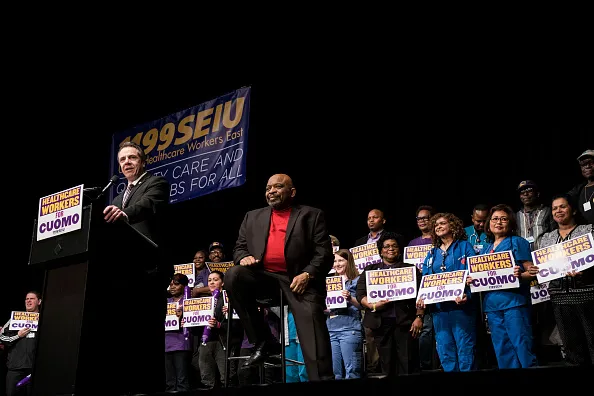The wrapping of the U.S. Equal Employment Opportunity Commission’s fiscal year each September provides a chance for employers to look at how the agency is prioritizing its enforcement — and how aggressively it is undertaking that pursuit. The takeaway for 2024? “A surprisingly quiet year on the litigation front,” Seyfarth attorneys wrote in a Sept. 30 post.
2024 appeared to be a strong candidate for aggressive litigation. It began shortly after the U.S. Senate confirmed Kalpana Kotogal as a commissioner in July, cementing Democratic control. Following a handful of slow years during the pandemic — the agency filed 94 cases in FY2020, 111 in FY2021 and 94 in FY2022 — EEOC ramped up considerably, filing 144 cases in FY2023.
“Many expected the Commission to continue this momentum into FY 2024,” Seyfarth said. Instead, the litigation rate dropped 35% compared to the year before.
Diminishing resources
While unexpected, the cause for the drop in litigation is hardly a mystery: The agency simply had less to work with. EEOC put in a budget request for $26 million more in FY2024, but Congress only approved the same budget it did for FY2023, Seyfarth pointed out.
“Their budget stayed flat, but their expenses went up,” Andy Scroggins, partner at Seyfarth, told HR Dive. Federal contracts obligated the commission to raise pay, and morale likely took a hit when the agency proposed a one-day furlough earlier this year, he added.
At that time, EEOC shared with HR Dive that more than three-quarters of the agency’s budget is allocated to compensation and benefits. In an agency-wide memo July 30, Chair Charlotte Burrows highlighted that expense, noting employees received a 5.2% pay increase despite no increase to the budget.
Chris DeGroff, also a partner at Seyfarth, pointed out that plenty of work kicked off in FY2023 spilled over into the next fiscal year as well, adding to the load.
“Many of those are systemic cases,” DeGroff said. “So when you have flat resources, increased expenses and this huge litigation inventory that they’re having to deal with — to me it’s not shocking that they’re going to have a dip like this.”
Despite that dip, Seyfarth attorneys were able to glean some trends in where EEOC focused its efforts.
An emphasis on hearing-related cases, harassment
Along with Title VII of the Civil Rights Act, the Americans with Disabilities Act is generally a top focus for EEOC. That focus continued in FY 2024, with 42 of the agency’s 96 filings pertaining to disability.
Among those 42, seven were on behalf of hearing-impaired employees, building on nine filed in FY 2023. The prioritization appears to be a reflection of guidance released in January 2023 on hearing disabilities in the workplace.
Additionally, the agency filed a number of harassment lawsuits, including “double-digit hostile work environment lawsuits for at least the third straight year,” Seyfarth said. Many of those dealt with non-office environments, such as the case of a Massachusetts scrap recycling facility accused of harassing Hispanic employees.
Combating harassment is a clear focus for the agency, evidenced by the April update to its Workplace Guidance to Prevent Harassment and guidance released in June specifically aimed at preventing harassment in the construction industry.
“The EEOC has stayed with its brand in that it has this step-wise approach to enforcement,” DeGroff said. “It announces an important policy and then it files several lawsuits showing that they’re serious about this and they’re going to hammer employers on these particular issues.’”
Enforcing EEO-1 submission
FY2024 was also the first time in many years that the agency used lawsuits to force employers to comply with EEO-1 Component 1 reporting requirements, Seyfarth found. An annual obligation for employers with 100 or more employees, the EEO-1 report — which breaks down employee demographic data by job category and race, sex and ethnicity — helps the agency with enforcement and research, EEOC has emphasized.
EEOC filed 16 lawsuits against employers it alleged did not adequately file EEO-1 data, charging violations of Title VII. The vast majority — 15 of those — were announced by the agency in a May press release, which Scroggins speculated was about “sending a message.”
“If you look at the complaints that were filed, it’s almost one per region, right? And they happened very close in time, a bunch of them even on the same day,” he said. “So it’s very much like a directive from someone in Washington saying, ‘We’re going to go out with a united front, we’re going to have a common press release, we’re going to have a series of these complaints all over the country because we want to generate attention.’”
In addition, with each complaint only a few pages long, the EEO-1 lawsuit blitz was likely a lighter lift for the cash-strapped agency, Scroggins said.
Other patterns emerge
Seyfarth found a few other data points that stood out. Regionally, the Indianapolis and Atlanta regional offices both saw rising enforcement, while things were sleepier on the West Coast. The Phoenix district office was an exception, fitting largely with historical precedent. “Phoenix has traditionally been one of a small group of districts that have an aggressive litigation agenda,” DeGroff pointed out.
In contrast, the Chicago and New York regional offices filed fewer lawsuits — seven and eight total, respectively — which “is notable for us, because they are typically also very active,” DeGroff said. The Philadelphia office saw the largest decline, filing 14 lawsuits in FY 2024, compared with 22 the previous year.
EEOC also filed significantly fewer religious discrimination lawsuits in FY 2024 at merely four, compared with 11 in FY 2023. Only one case dealt with COVID-19 vaccination, down from a spike of such cases in recent years. “It seems that the apparent wave of EEOC religion-based, COVID-19 litigation will be left largely to the private plaintiffs’ bar,” the attorneys wrote in their analysis.
Looking ahead
In terms of predicting the future, both Scroggins and DeGroff suggested the recent release of a report on the lack of diversity in the high tech industry is likely a harbinger of lawsuits to come.
“My prediction is that we’re going to see that this was not some random act of research; we’re going to see that there’s going to be some litigation activity showing that they are intending to enforce around some of those disparities,” DeGroff said.
Scroggins added that looking at complaints gives one a sense of the timeline, and charges and their determinations are often a year or more old. “So they may even have those cases already teed up and ready to go for next year,” he said, suggesting the agency may have 5 to 10 cases ready to file in FY 2025 if they’re unable to first resolve them with the company.
Given the agency’s “intense focus” on the topic, the public may see an AI-related lawsuit in the near future as well, Scroggins noted.
And while FY 2024 was light in litigation, next year may be different. Keith Sonderling, one of only two remaining Republicans, left the board in August, giving the Democratic majority a very solid grip on enforcement. The agency has shown it will resort to lawsuits if EEO-1 reports are not filed on time. And the agency requested a budget increase of more than $33 million, which, if granted, would significantly shore up its resources.
“Employers should not drop their guard,” Seyfarth attorneys cautioned.






Leave a Reply